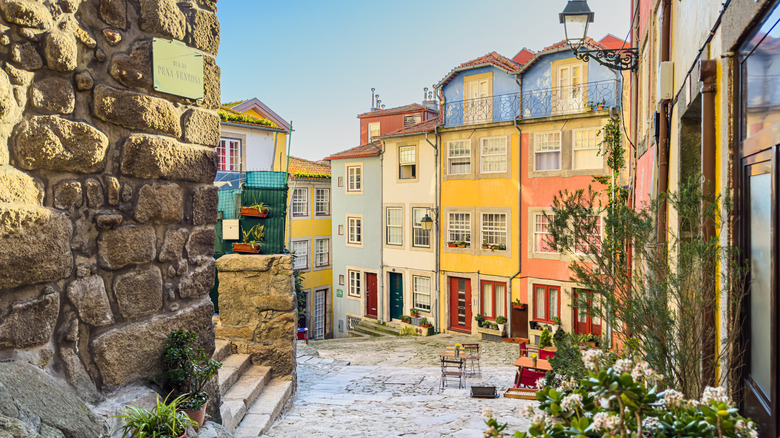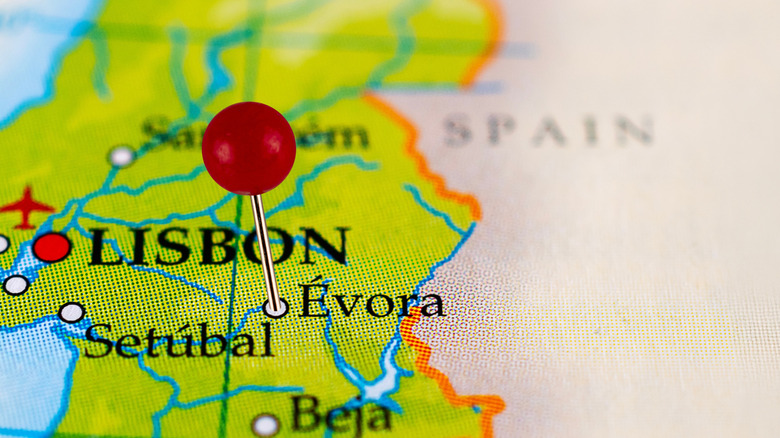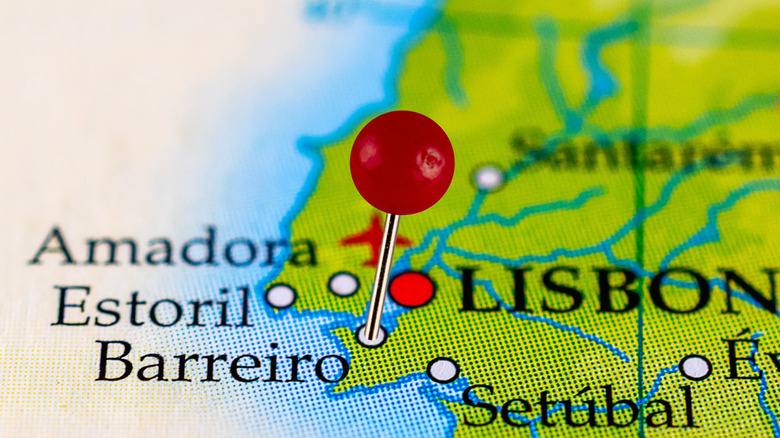The Only Map Of Portugal You Need For Your Upcoming Trip
The vast experiences stretching across the country of Portugal are surprising, considering the relatively small geographical imprint it inhabits. Spanning just 35,655 square miles, Mainland Europe's westernmost country is roughly the size of the U.S. state of Maine. But what it lacks in geographical size it more than makes up for in its historical and cultural influence.
In the 15th century, Portugal was the very first European country to embark on missions of discovery. The first person to circumnavigate the globe, Ferdinand Magellan, was Portuguese. His daring spirit led the way for numerous explorers who opened trade to Europe from faraway places like South America, southern Africa, and parts of North America.
Portugal is also the oldest nation-state in Europe and today is a democratic republic. In 2024, an estimated 19 million foreigners visited the country according to Turismo de Portugal, continuing to make tourism one of the biggest contributors to the country's economic growth. And it's no wonder tourism is up: Each region of this Iberian country offers beautifully diverse experiences that celebrate culture, industry, and history.
Explore the tranquility of Portugal's wild north
The northern regions of Portugal are much different than the sun-kissed beaches that get the attention of most tourism magazines. Vineyards along the Douro River Valley near Porto, the nation's second-largest city, help fuel the wine industry known especially for its port, available in both red and white varieties. Wineries like Graham's Port Lodge in Vila Nova de Gaia offers visitors a look at some of the oldest storage facilities of port wine and a comfortable tasting room to enjoy the flavorful varieties. Porto's iconic, arched Dom Luis I Bridge is well traveled and influenced by the time and artistry of Paris' Eiffel Tower. Not only are tours of expansive vineyards accessible from here, but so is one of the city's most visited landmarks, the Sé Cathedral. This cathedral dates to the 12th century and offers a glimpse of the country's past alongside impressive views of the city's landscape.
Porto is not just for wine and tours, however. Travel writer Rick Steves shares that Porto is also a great place to spend a lazy afternoon. It's a large city but offers easy access to some rural, and arguably the best, hiking trails and natural wonders in the country. Just under two hours by car to the northeast of Porto is Peneda-Gerês National Park, offering 270 square miles of mountains, waterfalls, and natural beauty. At one time, the Romans had a big presence in this area of Portugal, meaning hikers will come across Roman military ruins, castles, and monasteries.
Throughout the whole of northern Portugal, there are endless mountains and small villages to explore. This region is often referred to as "the real Portugal" by locals, where everyday life and local festivals unfold. Between the villages, travelers will encounter rural roads where wild horses and cows are free to roam.
Tourists flock to the sun and sand of Portugal's Algarve to the south
Likely the most popular and well-known destination in southern Portugal is the Algarve. Known for its sunny warmth and expansive beaches, the Algarve is a province resting along the Atlantic Ocean to its south and west and encompasses villages and resorts that attract tourists from around the world. In fact, the economy is fueled by tourism here, and spas like Pestana Alvor Praia resting on the cliffs of the famous Três Irmãos beach draw vacationers to the area. Nearby golf courses and restaurants also make vacationing easy here.
The Algarve comes by its nickname of "the California of Europe" honestly. The accommodations rival those of Mediterranean destinations, and the area boasts more than 3,000 hours of sunshine a year. The region is home to Praia da Ilha de Tavira, often considered one of Portugal's prettiest beaches, featuring cream-colored sand on an island paradise. And foodies will enjoy fresh seafood and wines specific to this region. Made from the Negra Mole grape, the Algarve's claret-style wines celebrate the local crop and the region's history.
As with all of Portugal, history is celebrated along the southern region. Faro's Cidade Velha (Old Town) is a laid-back destination that brings a focus to its Roman ruins, rather than beaches. While many businesses along the Algarve close shop in the colder months, Faro continues welcoming tourists well into the fall. October is typically a slower season in the region, meaning restaurants are easily accessible, as are ferry rides and museums, without the crowds.
Tranquility and tradition lie along Portugal's border with Spain to the east
If the northern part of Portugal is "the real Portugal," then the eastern region is the country's traditional side. Bordering the larger country of Spain, part of Portugal's eastern area belongs to a region known as the Alentejo. This region covers a third of the country and is its largest.
This area of Portugal is the least populated, with only an estimated 7% of Portugal's inhabitants living here. But what it lacks in population it more than makes up for in stunning vistas and charming historical towns. Among those towns rests Évora, a UNESCO World Heritage site that is considered a museum city.
For those looking to spend several days here, the accommodations are as luxurious as they are historic. The Convento do Espinheiro is a modern spa and hotel that sits within a former 15th-century convent. Évora has direct ties to the Roman Empire, and its Roman Temple is one of the best preserved in the Iberian Peninsula. Additionally, take note of Évora's historical white houses lining the tiled streets, which helped inspire similar white buildings throughout Portugal and even Brazil. Also still standing in Évora are the historic Água de Prata Aqueduct and old cathedrals, which regularly welcome tourists.
Lisbon, Portugal's capital, rests to the west
The Silver Coast of Portugal, its west coast, hugs the Atlantic Ocean and is a popular destination for expats looking to live in the country full time. Located just north of Lisbon, the country's capital, the area showcases a higher standard of living and a relaxed pace. It's also where you'll find Portugal's "Big Wave Capital," Nazare.
The capital city is itself a destination, too. Resting near the mouth where the Tagus River meets the Atlantic Ocean, Lisbon and the areas around it are home to more than 3 million people. It's known for its hilly landscape, and the popular Santa Justa Lift is a massive elevator that connects the upper and lower portions of the city. Lisbon is also home to multiple UNESCO World Heritage sites. Among them is the Jerónimos Monastery in the city's Belém neighborhood, which dates to 1502. Nearby, the Monument to the Discoveries installed along the city's waterfront in 1960 celebrates the seafaring history of the country. Less than an hour away by car sits the town of Sintra, where the palaces of Portugal's former royal families are now open for public exploration.
While geographically small, Portugal is a country of history, discovery, and culture. Each region represents a storied past and a tie to a culture that reflects the diversity of its inhabitants. Regardless of the region, there are artifacts from the past waiting to be explored alongside modern comforts, foods, and wines.




